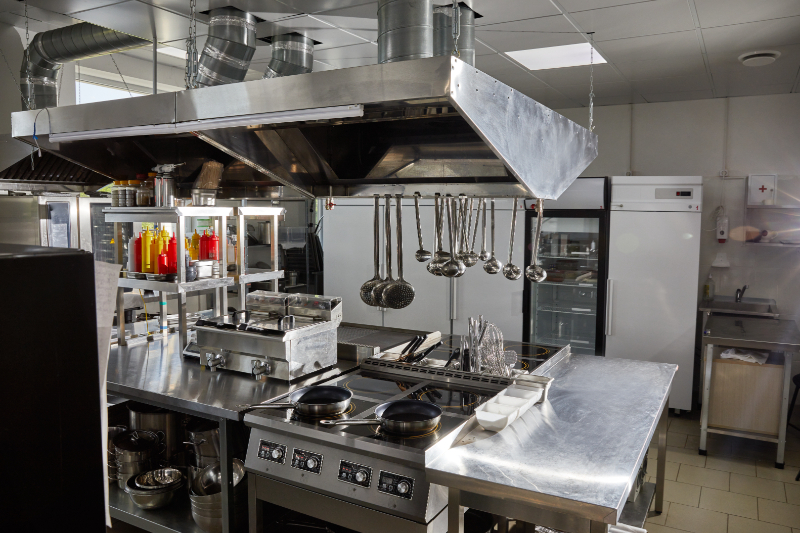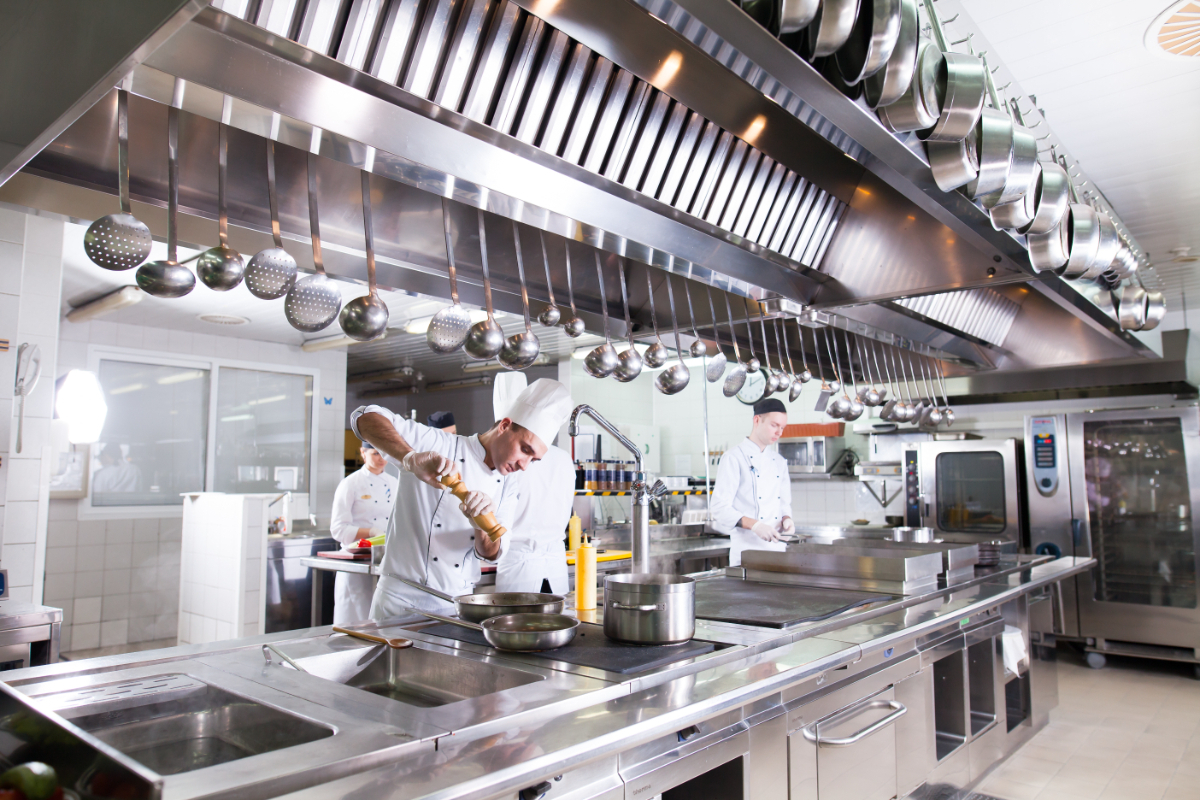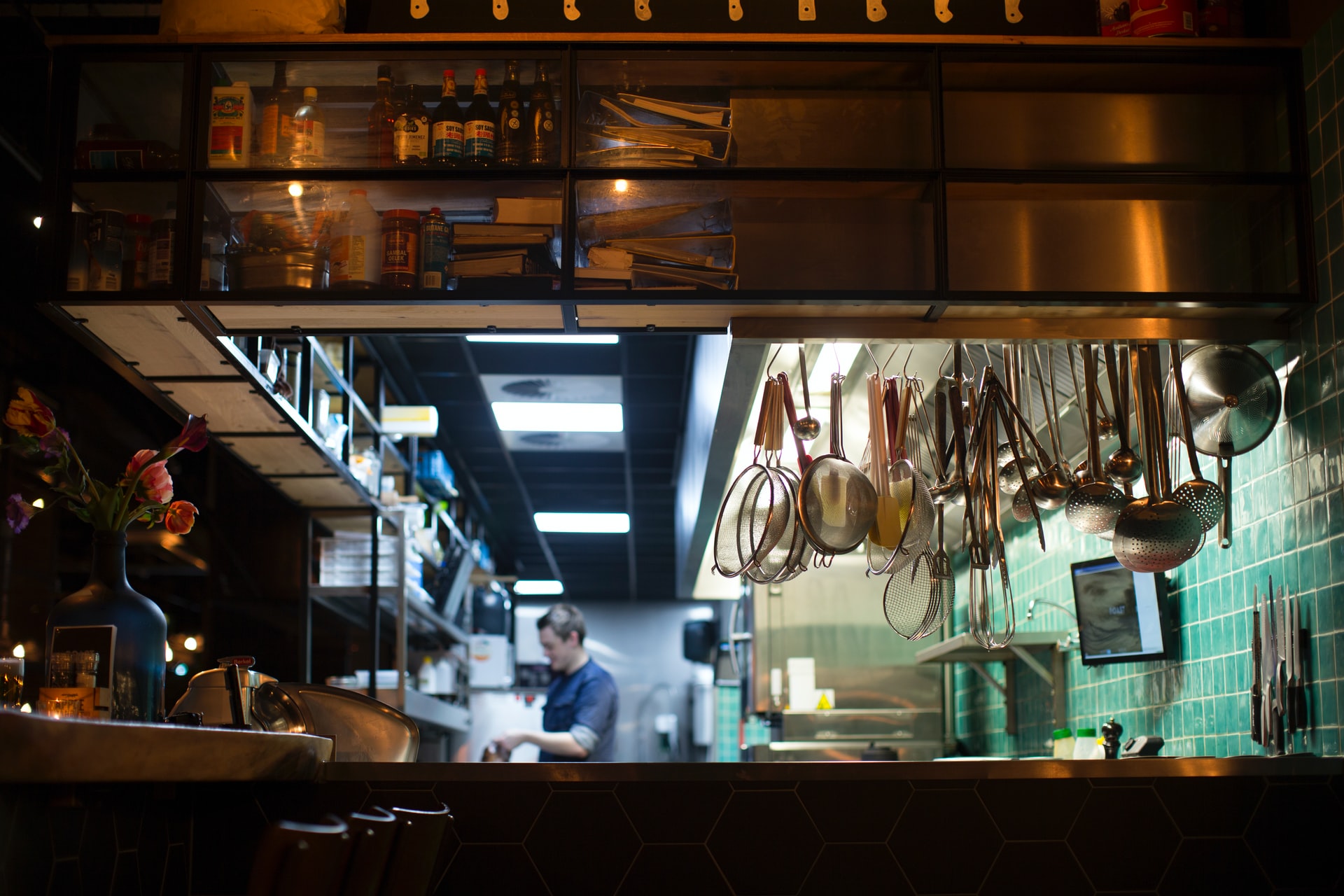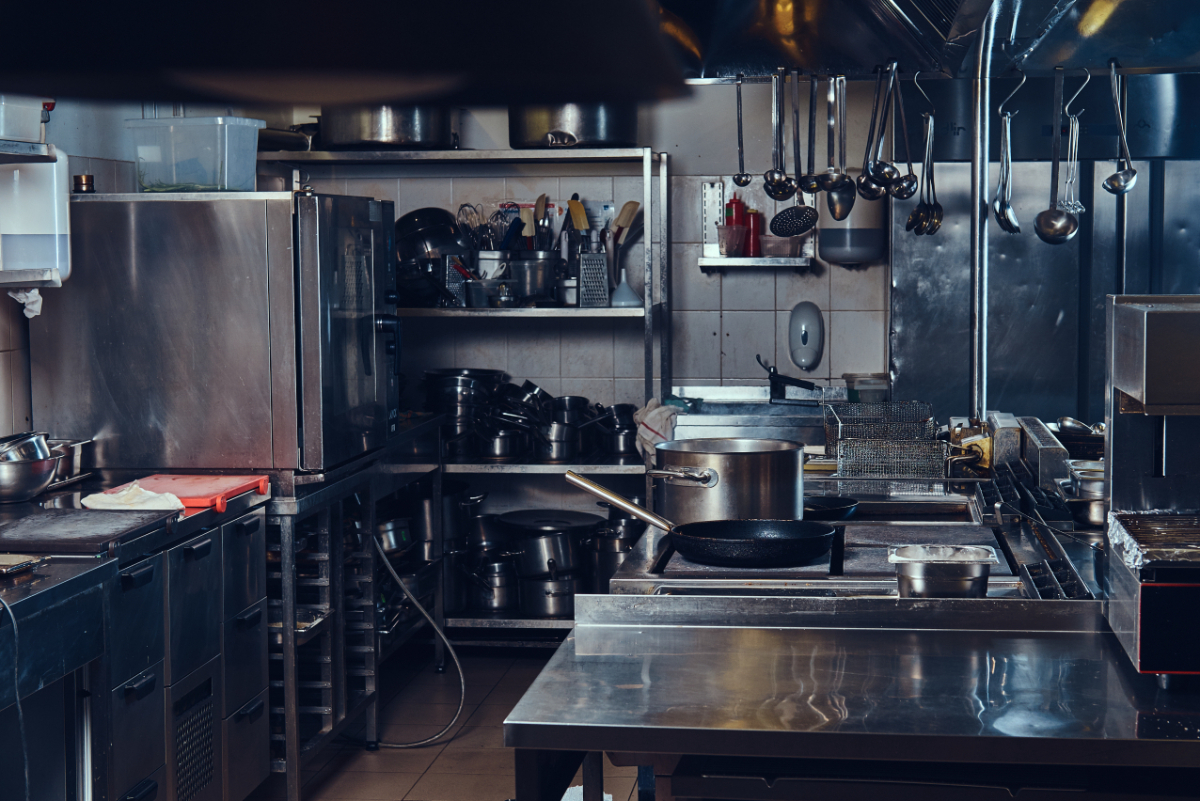We look at considering applications in your commercial kitchen layout. Discover the key considerations for selecting appliances based on your kitchen’s specific needs, from cooking and refrigeration to cleaning and storage.
How much does it cost to build a commercial kitchen?
Setting up a commercial kitchen is a vital part of establishing a successful catering or restaurant business. However, the cost to build such a kitchen can vary widely based on a number of factors.
The size of the kitchen, the level of appliances required, plumbing and electrical setups, and the desired overall design all contribute to the cost.
On average, creating a commercial kitchen in the UK costs anywhere from £25,000 to £100,000. This price tag can increase even further based on the intricacy of the design and the higher-end equipment used.
To work efficiently and provide excellent service to your customers, remember that investing in your kitchen at the beginning is crucial and could save on further costs down the line. Working with trustworthy teams of designers and contractors can help you understand the cost breakdown and find ways to build your kitchen efficiently and within budget.
What are the main categories of commercial catering equipment?
Commercial catering equipment is fundamental in any commercial kitchen design and is divided into five main categories:
Food Production Equipment
This list encompasses various kitchen appliances which are essential for both home and professional use.
The equipment includes everyday tools like ovens that are superb for baking, roasting and broiling delicious dishes; grills that are great for cooking meat, vegetables and other food items to perfection; fryers that facilitate fast and efficient deep frying; and mixers which offer versatility in the kitchen, letting you whip, knead, mix and beat food ingredients.
With these appliances, your kitchen team has the opportunity to create a wide variety of delectable meals efficiently. All are designed to increase productivity and enhance the overall cooking process, making them invaluable to any cooking endeavour.

Waste Management
An important area in maintaining health and safety is the proper use of waste disposal equipment. It is crucial to understand that this equipment is not just for tidying up, but serves a key role in making sure your working environment stays clean and hygienic.
It helps in preventing unwanted pests, providing you with a secure and worry-free workspace. Adopting effective waste disposal management also aligns with ethical responsibility towards environmental sustainability. So, always remember that investing in quality waste disposal equipment brings lasting rewards to your work setting and beyond.
Kitchen Maintenance
This package encompasses a range of cleaning supplies and maintenance tools. This is a crucial provision designed to guarantee a safe and healthy working environment for everyone. It's not just about cleanliness; it's also about maintaining equipment and spaces for optimum performance and efficiency.
With our inclusion of high-quality items such as disinfectants, mops, brooms, and tool kits, we can help ensure that your workspace remains clean, hygienic, and free from potential hazards. Remember, a tidy workspace is a productive workspace!
Food Storage
Refrigerators and freezers are absolutely crucial in maintaining the freshness and safety of our food. By keeping food at appropriate temperatures, they significantly help to prevent spoilage, ensuring its longevity. Furthermore, they help to prevent cross-contamination between different food items by allowing you to separate them, particularly different meats.
Dry storage cabinets also play a pivotal role in correctly storing food items. These are especially useful for products, like canned goods and some bakery items, which do not require refrigeration but still need protection from pests and moisture. With these appliances, one can ensure maximum food safety and minimisation of waste
Commercial Kitchen Utensils
Kitchen utensils and cookware are extremely vital in the process of preparing food. From tools that chop and cut, such as kitchen knives, to items that provide a surface for preparing ingredients like chopping boards, each utensil plays a pivotal role.
This extends to other implements such as pots and pans, which are fundamental in the actual cooking process. All these items collectively make for efficient and smooth food preparation.
Whether you're whipping up a quick meal or preparing a feast for guests, these tools of the kitchen are indispensable. The quality of these kitchen essentials also highly influences the final outcome of a dish, hence investing in good quality tools is essential.
Remember, correct selection and installation of these items are crucial for an efficient commercial kitchen.

What applications require a commercial kitchen fitting?
Certain applications specifically require a commercial kitchen fitting. Businesses that provide catering services, restaurants, cafes, bakeries, and institutions like schools, hospitals and care homes require these kitchens.
Commercial kitchens are designed to handle large quantities of food production, which match the demands of such establishments. They are built with high-quality commercial-grade materials that are designed to last, and can withstand the heat, grease, and heavy usage that occurs daily in these environments.
Which commercial kitchen layout is best for your restaurant?
The layout of your commercial kitchen dramatically affects the efficiency of your operations. A poorly designed kitchen can lead to significant delays and glaring mistakes, which can adversely influence the satisfaction of customers.
For optimal productivity and to sustain a high standard of service, it's crucial to have your kitchen well arranged. The most effective layout predominantly depends on the available space you have, the type of cuisine you primarily serve, the amount of staff that would be using the kitchen and the overall efficiency of workflow.
Therefore, taking the time to plan the kitchen layout thoughtfully is fundamental for any food business. The 'Assembly Line' layout is particularly effective for restaurants that need to prepare a large quantity of similar dishes quickly and efficiently. In an 'Island Style' layout, all main appliances are grouped together in the centre of the kitchen. This allows workers to move around freely and easily access any appliance.
On the other hand, the 'Zone Style' layout compartmentalises the kitchen into distinct areas. Each area is designated for a different task, ensuring a well-organised workflow. This makes the kitchen operations more streamlined and efficient, leading to improved productivity and service quality. It's beneficial to contact experts to find the perfect fit for your kitchen.
What are the regulations that must be followed in a commercial kitchen?
Compliance with regulations in a commercial kitchen environment is of utmost importance in the UK to secure the wellbeing and safety of your staff members and cherished customers.
These regulations encompass food hygiene standards, the thorough prevention of gas leaks through gas safe measures, and all-encompassing health and safety guidelines. Adhering to these will avoid potential incidents like carbon monoxide poisoning.
Additionally, other paramount regulations include waste management and fire safety standards, which are instrumental in creating a safe and healthy working atmosphere.

The incorporation of certain pivotal measures is crucial in any kitchen environment to ensure health and safety are upheld. Firstly, the equipment utilised within a kitchen must be regularly serviced and checked. This is crucial to avoid any unexpected breakdowns or safety hazards.
In addition, staff members must be trained in food safety practices. Equipping employees with the necessary knowledge on hygiene standards helps to maintain cleanliness and safety. Further, these considerations should extend to the design of the kitchen itself. The layout should allow for easy cleaning, helping prevent the cross-contamination that is often a risk in high-traffic food prep areas.
Additionally, surfaces within the kitchen should be selected for qualities such as heat resistance and resistance to corrosion. This can help maintain the longevity of your kitchen and ensure safer preparation of food.
Certified kitchen designers can assist in creating a space that mitigates potential dangers ensuring a safe and efficient kitchen. Remember: it may seem like a lot to handle, but a qualified team of contractors can guide you through each of these steps to ensure your kitchen runs efficiently and safely.
Do you require commercial kitchen fitting services in Glasgow and the surrounding areas of Scotland?
Get in touch today to discuss your requirements.
Commercial Kitchen Fitters Glasgow

